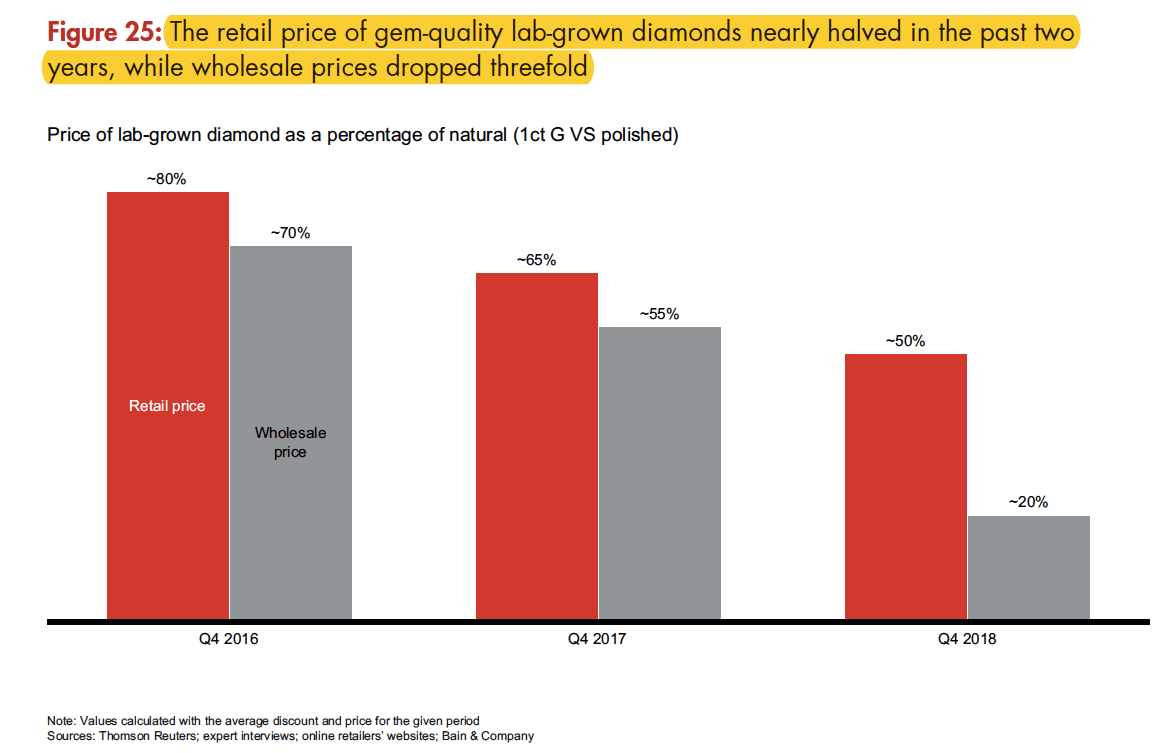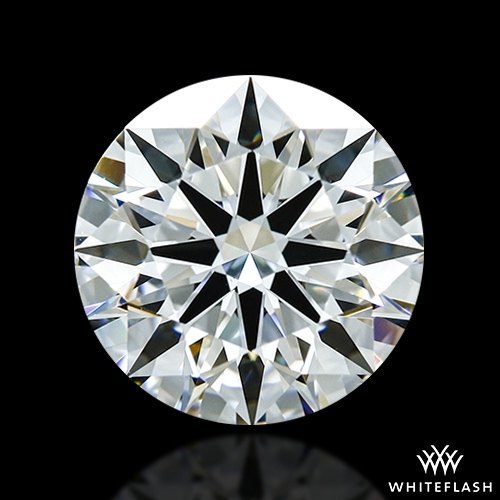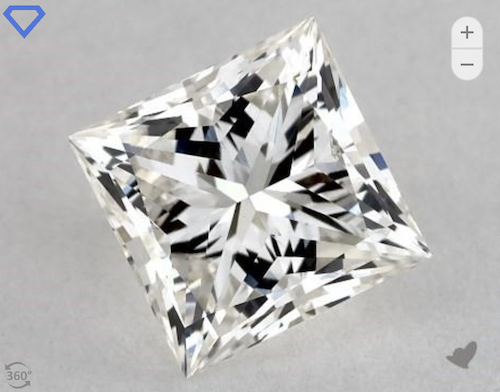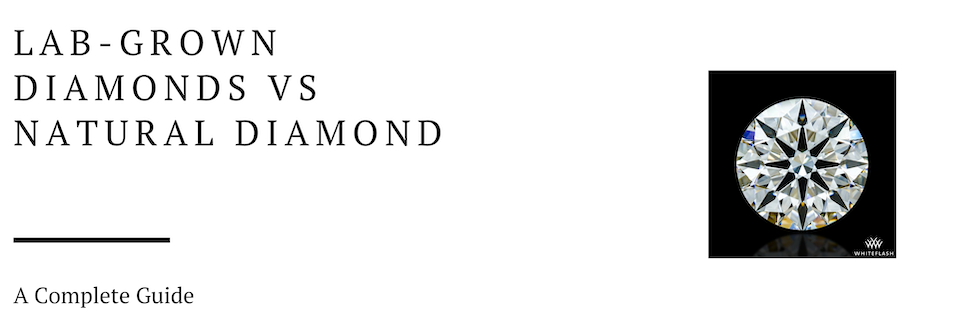
In an age where conscious consumption is more than a passing trend, consumers are constantly seeking ways to make ethical and environmentally-friendly choices – even when it comes to luxury items like diamonds. The glittering world of gemstones is not untouched by this wave of responsible thinking. One innovation that stands at the forefront of this movement is lab-grown diamonds. These diamonds, cultivated meticulously within laboratories, are becoming increasingly popular as they promise the same dazzling brilliance and hardness as mined diamonds, but with fewer ethical dilemmas and a lower environmental impact.
This guide aims to take you on a journey through the fascinating world of lab-grown diamonds. From their creation in labs to their environmental implications, from grading their quality to tips on buying the perfect lab-grown diamond for you, this comprehensive guide endeavors to equip potential buyers with the necessary knowledge and confidence.
Whether you’re considering a lab-grown diamond for an engagement ring, or a pair of classy earrings, or simply want to indulge in the world of diamonds with a clear conscience, this buyer’s guide to lab-grown diamonds will illuminate the path for you. Let’s take the first step into understanding these shimmering products of science and innovation.
Summary:
- Understanding Lab-Grown Diamonds
- The Science Behind Lab-Grown Diamonds
- How Much do Lab Diamonds Cost?
- Quality and Grading of Lab-Grown Diamonds
- Choosing the Right Lab-Grown Diamond
- How to Clean Lab-Grown Diamonds
- Where to Buy Lab-Grown Diamonds
Understanding Lab-Grown Diamonds
Lab-grown diamonds, also known as cultured or engineered diamonds, are fast becoming a consumer favorite due to their ethical and environmental advantages. But what are they exactly? Let’s break it down:
- What are Lab-Grown Diamonds? Lab-grown diamonds are real diamonds that are manufactured in a laboratory setting. They possess the same physical, chemical, and optical properties as naturally mined diamonds.
- How are They Created? Scientists mimic the natural process of diamond formation in labs. They replicate conditions of extreme heat and pressure or use a technique that deposits carbon atom-by-atom onto a tiny diamond seed, resulting in real diamonds.
- Lab-Grown vs. Mined Diamonds: Similarities and Differences: The primary distinction between lab-grown and mined diamonds is their origin. Natural diamonds are formed over billions of years underground, while lab-grown diamonds are created within a few weeks in labs. However, apart from the origin, lab-grown diamonds and mined diamonds share almost identical properties, from their hardness to their brilliant sparkle.
- Historical Context: Lab-grown diamonds have been used for industrial purposes for decades. It’s only recently that technological advancements have made it possible to produce gem-quality lab-grown diamonds suitable for jewelry.
The world of lab-grown diamonds is fascinating, offering an enticing blend of beauty, affordability, and ethical peace of mind. These man-made gemstones are not only capturing the market but also the hearts of conscientious consumers around the globe.
The Science Behind Lab-Grown Diamonds
The creation of lab-grown diamonds is a fascinating blend of art and science. Here, we delve into the two main methods scientists use to create these sparkling wonders:
- High Pressure High Temperature (HPHT): This method mimics the natural diamond formation process. It involves placing a diamond seed in a piece of carbon, then subjecting it to temperatures of about 1500 degrees Celsius and pressures of 1.5 million pounds per square inch. The intense heat and pressure dissolve the carbon into a diamond around the seed.
- Chemical Vapor Deposition (CVD): Unlike HPHT, the CVD process doesn’t require high pressure. Instead, it involves placing a diamond seed in a sealed chamber and filling it with a carbon-rich gas, like methane. The chamber is then heated to approximately 800 degrees Celsius. The gas molecules break apart, and the carbon atoms adhere to the diamond seed, layer by layer, growing it into a larger diamond.
Each method has its strengths and weaknesses, and the choice between the two often depends on the specific requirements of the diamond being produced.
Interestingly, it’s worth noting that the technology to create lab-grown diamonds has advanced so much that even experienced gemologists cannot tell the difference between a lab-grown and a mined diamond without specialized equipment. The diamonds produced, regardless of the method used, are just as stunning and durable as their natural counterparts.
How Much do Lab Diamonds Cost?
Understanding the cost factor associated with lab-grown diamonds is essential in making an informed buying decision. Let’s explore some of the key points regarding the pricing of these man-made gemstones:
- Pricing Compared to Mined Diamonds: Lab-grown diamonds are generally more affordable than their mined counterparts. On average, they can cost 70-80% less than a mined diamond of similar size and quality. This is largely due to the shorter supply chain and the lack of mining costs.
- Reason for Lower Cost: The lower price point does not imply a compromise on quality. The reduced cost is primarily due to the controlled, less labor-intensive process of creating diamonds in a lab. Additionally, lab-grown diamonds skip the mining process, which can be costly and time-consuming.
- Quality for the Price: Given their lower price, lab-grown diamonds often offer more quality or size for the same budget. This means buyers could opt for a larger stone or a diamond with better clarity and color than they might afford in a mined diamond.
- Market Variations: While lab-grown diamonds are generally cheaper, market variations can exist. Factors such as the size and quality of the diamond, the retailer’s mark-up, and supply and demand dynamics can impact the final price.
- Long-term Value: As for resale value, it’s important to remember that like cars or electronics, diamonds—whether mined or lab-grown—typically depreciate once they leave the retailer. While the resale market for lab-grown diamonds is still evolving, they usually won’t retain value as well as mined diamonds.

Image Courtesy BetterDiamondInitiative.org
In conclusion, lab-grown diamonds present a more affordable alternative to traditional mined diamonds without sacrificing the beauty and quality that these precious stones are known for. This cost-effectiveness makes them an attractive option for many buyers, particularly those who prioritize ethical and sustainable practices.
Quality and Grading of Lab-Grown Diamonds
The quality of a diamond, whether mined or lab-grown, is evaluated based on universally accepted metrics often referred to as the Four Cs—Carat, Cut, Clarity, and Color. Understanding these measures is crucial for any diamond buyer:
- Carat: This refers to the weight of the diamond. Larger diamonds are rarer and therefore more valuable.
- Cut: The cut of a diamond determines how well it reflects light, impacting its brilliance. A well-cut diamond will have more sparkle and fire.
- Clarity: Clarity grades assess the presence of internal or external flaws, known as inclusions and blemishes. Diamonds with fewer flaws have higher clarity.
- Color: For white diamonds, the best color is no color. The Gemological Institute of America (GIA) grades diamond color on a scale of D (colorless) to Z (light yellow or brown).
Lab-grown diamonds are subject to the same grading principles. However, there’s an additional factor to consider—the growth method. HPHT diamonds often have metallic inclusions that can affect clarity, while CVD diamonds can show strain patterns when viewed under UV light.
The grading of lab-grown diamonds is conducted by renowned gemological organizations that assess their quality based on these parameters. While GIA is one of the most recognized grading bodies globally, the International Gemological Institute (IGI) has become the most prominent grader for lab-grown diamonds. IGI is known for its precise and accurate grading reports, which provide an in-depth analysis of the diamond’s Four Cs, as well as any additional identifying features unique to lab-grown diamonds.
Ultimately, the quality and grading of lab-grown diamonds underscore their equivalency to mined diamonds. They provide buyers the confidence of knowing they’re purchasing a gem that’s not only created with innovative technology but also evaluated with the highest standards of the gemological world.
Choosing the Right Lab-Grown Diamond
When it comes to choosing the perfect lab-grown diamond, a few crucial factors can guide your decision:
- Understand the Four Cs: As with mined diamonds, understanding the Four Cs—Carat, Cut, Clarity, and Color—is essential. Determine what’s most important to you. For example, if size matters more to you, you may compromise a bit on color or clarity to get a larger carat diamond within your budget.
- Light performance imaging: Light performance imaging is crucial in diamond selection as it reveals how a diamond interacts with light, influencing its brilliance, fire, and scintillation. This tool ensures buyers choose a diamond with optimal sparkle and visual appeal.
- Select the Shape and Cut: Diamonds come in various shapes, each with its unique charm. From round, princess, oval, to marquise, and more, choose a shape that resonates with your style. The cut of the diamond significantly impacts its brilliance, so ensure you choose a well-cut diamond.
- Check the Grading Report: Always look for diamonds that come with a grading report from a reputable organization like the IGI. The grading report gives you an in-depth understanding of the diamond’s quality and ensures that you’re making an informed purchase.
- Consider the Retailer: Select a trusted retailer that offers high-quality lab-grown diamonds, provides grading reports, and has a transparent sourcing process. Whiteflash is renowned for offering the best lab-grown diamonds in the market, particularly their Precision Cut Lab Diamonds. These diamonds are known for their superior quality, exquisite cuts, and incredible brilliance.
- After-Sale Services: Look for retailers that offer services such as cleaning, resizing, upgrades, and warranty. Such services can add significant value to your purchase.
Choosing the right lab-grown diamond involves a blend of knowledge, personal preferences, and careful selection. Whether you’re drawn to the sustainable appeal, the innovative creation process, or the sparkle that rivals any mined diamond, finding your perfect gem in the world of lab-grown diamonds is a uniquely rewarding journey.
How to Clean Lab-Grown Diamonds
Proper care and maintenance for your lab-grown diamonds will ensure they maintain their sparkle and brilliance for a lifetime. Here are some easy steps you can follow:
- Regular Cleaning: Like natural diamonds, lab-grown diamonds can attract grease and dirt. Regular cleaning at home using a gentle solution of warm water and mild dish soap can keep them sparkling. Use a soft toothbrush to clean the diamond and the setting.
- Professional Cleaning: It’s beneficial to have your diamond jewelry professionally cleaned once or twice a year. Jewelers have specialized tools for a thorough cleaning without damaging the diamond or setting.
- Avoid Rough Handling: Even though diamonds are the hardest known substance, they can chip if hit with enough force at the right angle. Avoid wearing diamond jewelry during rigorous activities.
- Safe Storage: When not in use, store your diamond jewelry separately to avoid scratches from other pieces. A fabric-lined jewelry box with individual compartments is ideal.
- Regular Check-ups: Have your jewelry checked by a professional once a year to ensure the prongs are secure and there’s no damage to the diamond or setting.
Where to Buy Lab-Grown Diamonds
Lab-grown diamonds have revolutionized the gemstone industry, offering a stunning, affordable alternative to mined diamonds. They capture the beauty and brilliance of natural diamonds while sidestepping the environmental and ethical concerns that come with mining. With advancements in technology, lab-grown diamonds today are nearly indistinguishable from their natural counterparts, with the added appeal of being significantly more affordable.
With proper care and maintenance, your lab-grown diamond can offer a lifetime of brilliance and enjoyment. It’s more than just a gemstone; it’s a symbol of your values, a nod to both innovation and tradition and an expression of timeless beauty and personal style. So, embark on this journey with confidence, and find a diamond that truly resonates with you.

I’m Louis Jacobs, the creator of Diamond Expert, a platform where I share my lifetime’s knowledge of diamonds. Born and raised in Antwerp, Belgium, the world’s diamond hub, my fascination with these precious gems began at a young age. I spent over three decades in the diamond industry, earning the reputation of a trusted advisor among friends and family for diamond purchases, particularly engagement rings. Now retired, I’m dedicated to providing online guidance to make your diamond buying experience informed and successful.



